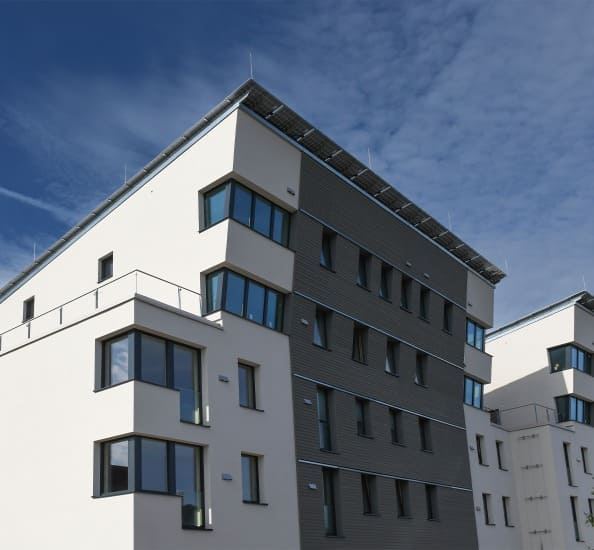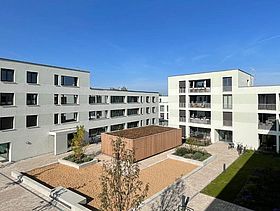Energy-plus ClimateHouses in Schallstadt
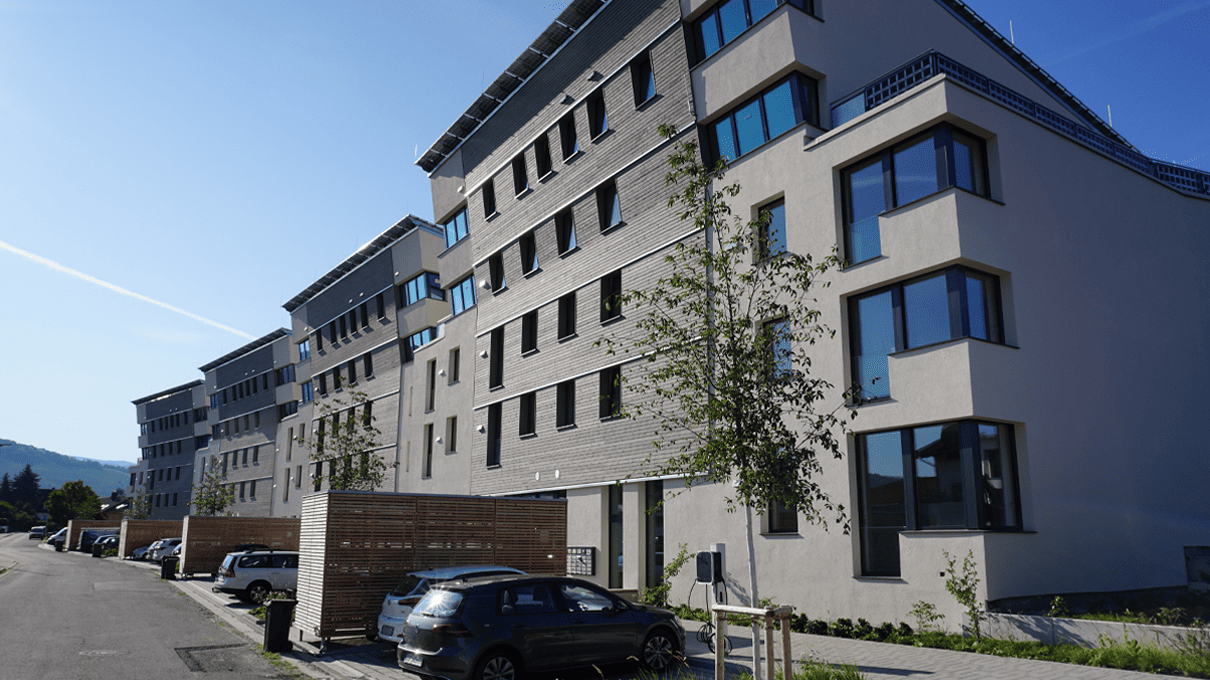
Comfort ventilation units as part of a sustainable heat concept
Tailored living space with future-proof heat and energy concept. The Weiermatten district of Schallstadt near Freiburg saw the construction of a residential block with four energy-plus ClimateHouses built to the plans of architect Rolf Disch. It is not just the variety of residential units and their high-quality fittings that impresses; there is a sustainable energy concept implemented using a holistic approach. A significant proportion of this comprises energy-efficient comfort ventilation with heat recovery. The units were supplied by Meltem, the ventilation specialist based in Alling near Munich.
Individuals live in a community setting
The residential complex in Schallstadt is characterised by its natural setting in the vicinity of Freiburg and its elevated architectural style. The four residential buildings, each four storeys high, are constructed as a single row of buildings. They provide an area of 7200 m² – enough space for four office and 83 residential units. The emphasis is placed on individuality, thanks to the variable floor plans. From a one-room studio, taking in family-sized homes, through to the exclusive penthouse or cluster apartments – practically any living concept can be implemented. There are also barrier-free and senior-oriented residential units, along with the option of combining living and work or even community living. Garden terraces on the ground floor, shared green spaces and a stream nearby enhance the quality of life.
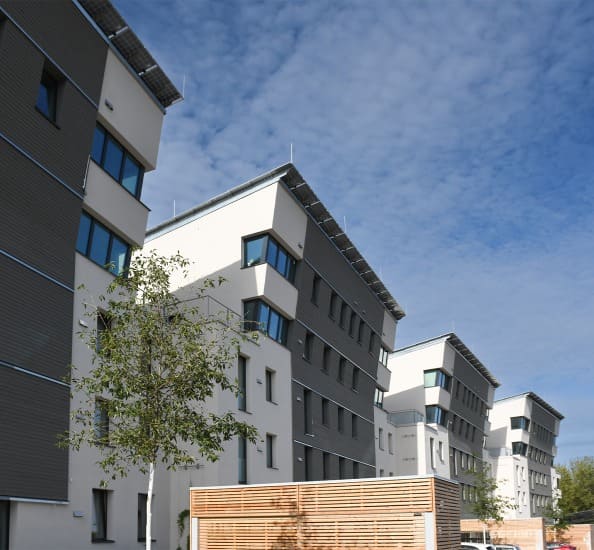
Spotlight on sustainability
The central element of the new building in Schallstadt is the holistic renewable energy and heat concept which aims to make a significant contribution to climate protection. Architect Rolf Disch injected into this concept the extensive expertise he has gained in the course of numerous projects over the decades. He designed the four buildings in the Weiermatten neighbourhood as KfW 40 Energy-Plus houses with their low energy requirements that are fully covered by renewable sources. The building envelope was fitted with effective thermal insulation (mineral wool, 30 – 40 cm).
Large windows allow passive utilisation of the sun’s heat. Temperature control in the rooms is provided by panel heating via heat pumps which, in turn, source heat from a cold local heating system. The baseload heat required for this is drawn from a sewer that runs through the residential area. An outlet temperature of 15 to 17 °C is guaranteed throughout the year. This is sufficient to raise to 35 °C the flow temperature for the panel heating in the living areas and offices. And by recovering heat from shower water, energy is also saved in terms of water heating.
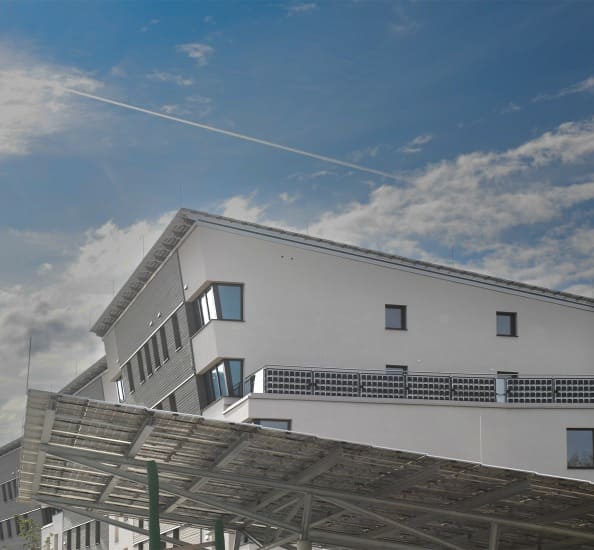
The power supply is designed so that the power required can be fully covered by the building’s own photovoltaic system. PV modules with a total output of 450 kW were installed on the roof and balcony parapets. The power generated during the day is stored in a 120 kWh battery from which it can be drawn by users during the evening. Any power that remains unused is fed into the network.
Another component of the forward-looking energy concept is the decentralised comfort ventilation system with heat recovery. This combines the benefits of structural protection by demand-controlled removal of excess moisture in the ambient air with recovery of heat from the extract air at the same time. This is again used for temperature control in the rooms.
Ventilation with heat recovery as part of the concept
BThe ventilation concept used here is entirely based on the Meltem multi-room solution which allows air to be supplied to and removed from several rooms with a single unit. This is especially cost-effective since only two units are needed for four rooms to ensure the necessary air renewal. Flexible pipes and ceiling valves extract the air from the internal bathroom (to DIN 18017-3), for example, supplying the living room and bedroom with air at the same time.
Regular air renewal is essential, especially in the kitchen and bathroom, since these rooms are often very humid and this moisture needs to be continuously removed. The rooms were connected using the 75 mm flexible pipe system. For the entire project, 101 M-WRG-II E-T-FC ventilation units with humidity and CO2 control were installed; these monitor the ambient air quality and allow the air to be renewed on demand. The 2-room apartments all have one ventilation unit each, while the 3 and 4-room residential units are equipped with two units.
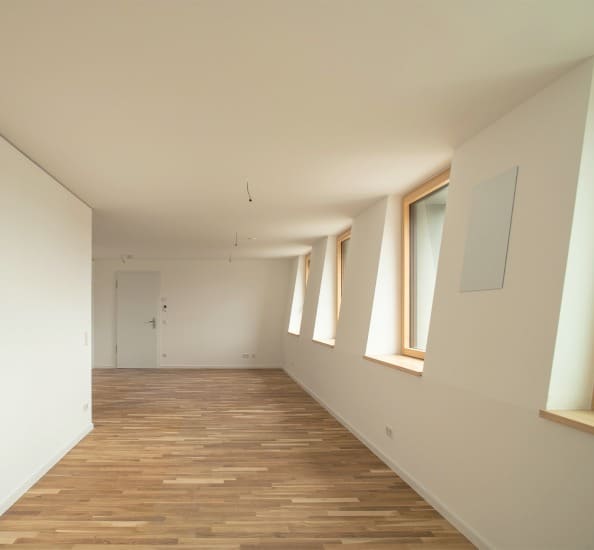
How it works
During periods of cold weather, the used, warm ambient air is extracted via an enthalpy cross-counterflow heat exchanger. The heat is extracted from this air and transferred to the fresh air that is supplied separately at the same time. This allows up to 87 % of the heat to be recovered. The supply air is also preheated in this way, so it enters the living space without creating drafts. This not only means a reduction in the energy required, but it increases the living comfort since the air temperature remains constant.
The enthalpy exchanger also ensures additional moisture recovery and conditioning of the ambient air humidity, further improving the atmosphere in the room. This creates a pleasant drop in humidity inside the home, especially in summer. In winter, the enthalpy also effectively prevents the ambient air from drying out.
The demand-controlled ventilation also ensures that pollutants in the air – emissions, CO2, mites and mould spores – are removed. Even hay fever sufferers can breathe easily since all the units are fitted as standard with a fine particulate filter (ISO ePM1 60% (F7)) for the outdoor air. The fine filter medium effectively retains respirable dust particles such as pollen, soot and bacteria from dust class PM1. A special activated charcoal filter is also available on request; this absorbs odours from harmful gases, nitrogen oxides and ozone.
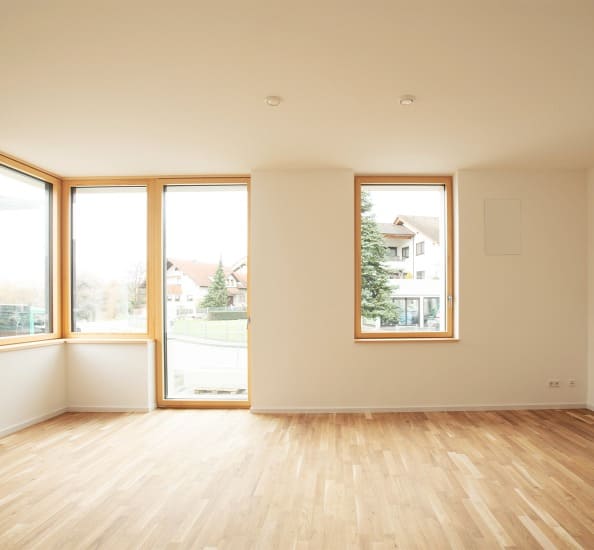
Demand control by sensors
With demand control, operation of the ventilation units is especially energy-efficient and cost-effective. It is based on continuous analysis of the air quality. The demand-controlled ventilation is then based on the actual situation since the air quality in a room is not always the same. Various factors, from the number of people in the room to vapours from furniture and textiles, affect the air quality.
Thus a mixture of different gases accumulates in every room; this can be harmful in high concentrations, so it needs to be continuously removed. To allow this to be done on-demand, Meltem developed ventilation units containing sensors which analyse the ambient air quality, thus ensuring optimum air renewal.
The starting point for determination of the air quality is the CO2 which is higher or lower according to the number of people in a room. A CO2 sensor offering advanced non-dispersive infrared technology (NDIR) is used for this purpose.
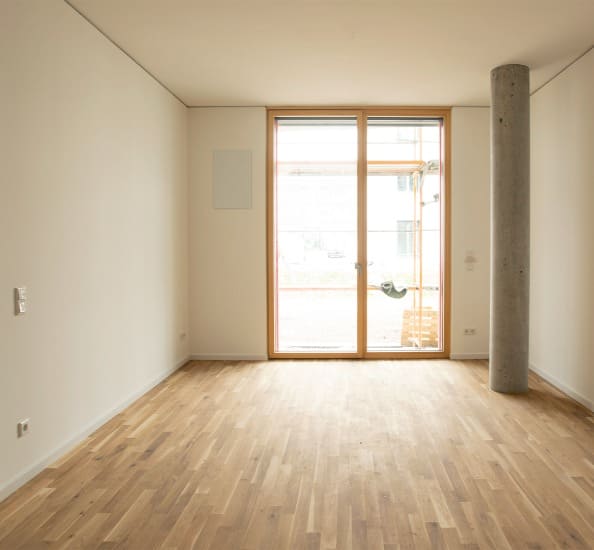
Ease of use
The units are simple to operate using a 4-way wireless pushbutton switch. These switches are programmed as standard with ventilation levels I – III (10, 30, 60 m³/h) and intensive ventilation (100 m³/h for 15 min). The unit feature with sensors used here uses button 3 to set automatic mode with humidity and CO2 control. In the middle of the switch there is also an LED that indicates the unit’s status. The colours green, orange and red, together with flashing mode, allow the messages to be easily identified. So users can operate their ventilation unit at any time and, if necessary, replace the air filter or battery of the wireless pushbutton switch. This will ensure that the ventilation unit works optimally at all time. The basic settings can also be programmed using the Meltem app or the optional wireless remote control M-WRG-FBH.
Practically invisible
The U² integrated into the wall solution was used in Schallstadt; the units were integrated into the external walls of the rooms and are practically invisible once fully installed. To prepare for installation, wall boxes were first fitted in the external walls when the building shell was constructed. The ventilation units were then simply inserted once the interior work was complete. Another benefit of this installation method is the excellent soundproofing of the units which can be up to 70 dB for the M-WRG-II unit when integrated into the wall U² (D n,e,w, 65 dB as standard).
For the air renewal, the outdoor and exhaust air are drawn in and routed through adjacent air pipes which open directly onto the building facade. Elegant stainless steel ventilation hoods were also attached to the outside of the building facade, maintaining the high-quality visual appearance of the facade.
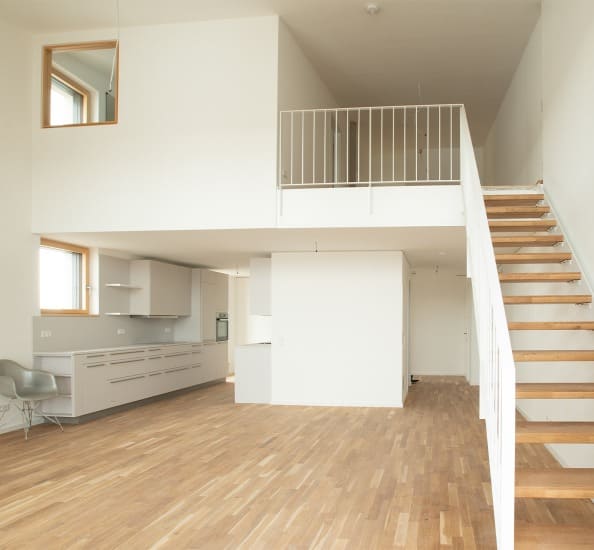
Summery
The Energy-Plus ClimateHouses in Schallstadt show that installing decentralised ventilation units with heat recovery makes a significant contribution to saving energy in modern buildings. Combined with sustainable heat concepts, they open up future-proof solutions to ensure the sensitive use of energy resources. At the same time, home ventilation units from Meltem help to continuously improve the air quality in rooms and thus enhance living comfort.
